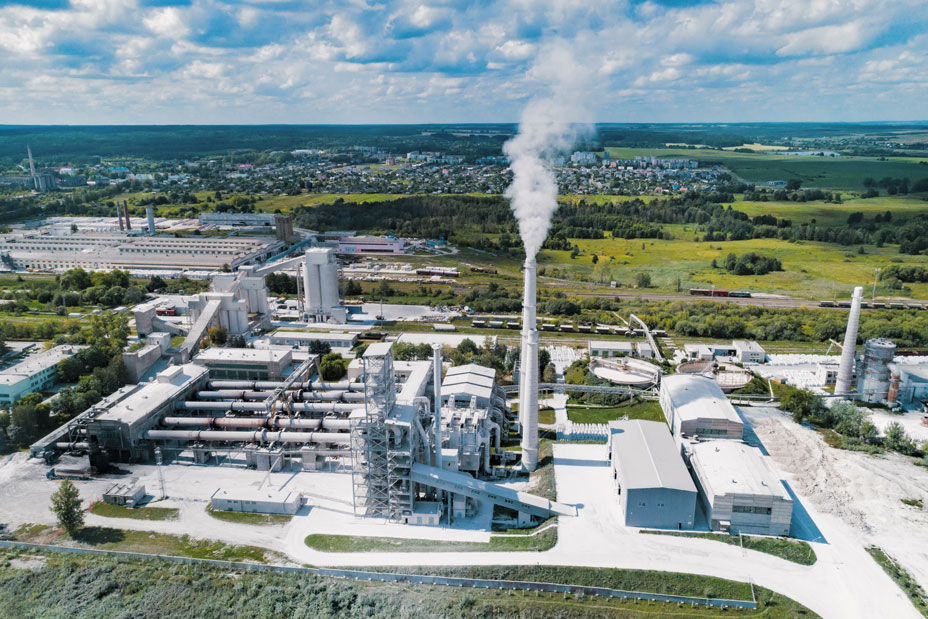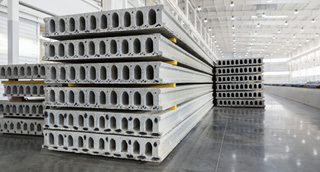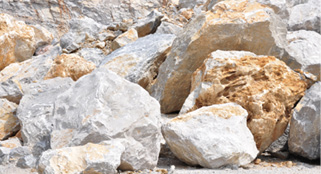Decarbonization Of Post-Combustion And Geogenic CO2 From Cement Making And Concrete.
By Stephen B. Harrison and Allegra Cresswell-Turner
Some industries are considered difficult to decarbonize. Ammonia, iron and steel making are examples and cement making is another.
The challenge of decarbonization in these industries is that carbon dioxide (CO2) emissions result from the processes themself, in addition to post-combustion CO2 emissions from burners that are used to generate the heat energy and high temperatures that are essential for the processes.
In cement making, calcium carbonate in the form of limestone is chemically reduced to form calcium oxide. Geogenic CO2 is produced from the mineral processing chemistry. There simply is no alternative way to produce calcium oxide from limestone and CO2 generation cannot be avoided.
However, there are many things that can be done to mitigate CO2 emissions to the atmosphere. Decarbonization may be difficult, but it is possible.

Reducing Indirect CO2 Emissions
Limestone, clay and sand are the main ingredients for cement making. Other materials can be added, but these minerals make up the biggest tonnages that are moved from quarries to the cement plant. Transportation can be decarbonized using battery or hydrogen powered electric vehicles.
It is estimated that 10% of CO2 emissions related to cement production result from transportation and electrical power required to operate machinery within the cement making process. Fans to move hot gases consume power. As do the limestone crushers and cement clinker grinding mills.
The sintering process takes place in a heavy rotary kiln, which also requires a powerful motor. Altogether, a standard 3,000 tonnes per day cement plant will require between 20 and 25 MW of power.
Waste heat recovery from the flue gases for an Organic Rankine Cycle or steam plant for electricity self-generation is highly relevant for cement plants and energy efficiency results in a reduction in the total system CO2 emissions.
Renewable electricity generation is also an option and some cement plants have installed PV solar or wind farms to provide power for motors. In the future, this renewable power could be scaled up to provide energy for indirectly heated calcination and reduce post-combustion CO2 emissions from cement making.
Decarbonizing Through CCS

Formation of CO2 during the calcination reaction is unavoidable and this geogenic CO2 can account for up to 65% of CO2 emissions from cement production. Part of the decarbonization solution in mineral processing must therefore include carbon capture.
A range of technologies for capturing the CO2 emissions exists such absorption into an amine type solvent, or adsorption onto solid sorbents that have a high affinity for CO2. Mineralization of the CO2, for example, through combination with ultramafic rocks, is another way to capture CO2 emissions.
Capture of geogenic and post-combustion CO2 through retrofitting carbon capture equipment to cement plants is conceivable. The question then becomes: what to do with the captured CO2 gas? Can it be sent for use in enhanced oil recovery, food and beverage utilization applications or must it be transported offsite for permanent underground storage in a CCS scheme?
In some cases, transportation of captured carbon dioxide to a CCS pipeline for permanent underground storage will be the only option. This process is being used in combination with an amine wash solvent absorption process at Norcem’s Brevik cement plant in Norway.
The plant is located on the banks of a fjord, which allows the CO2 to be liquefied and then shipped by CO2 tankers. They will take it to an offshore terminal where it will be permanently sequestered underground in a saline aquifer at high pressure as part of the Northern Lights CCS scheme.
If there is no CCS scheme close by, the captured CO2 could potentially be reacted with green hydrogen, produced by an electrolyzer, to generate methane. The methane can then be used within the cement making process to fire the burners.
Hydrogen

The use of hydrogen on sintering kiln burners is broadly considered to be problematic in cement making and conversion of hydrogen to methane by combination with CO2 through a reaction called methanation is believed to be a better fit for the heating requirements of this sector.
One of the challenges of some electrolyzer schemes in other industries that are driven by the growing demand for hydrogen, is to find a use for the oxygen. In the cement plant the answer is clear: use an oxygen enriched combustion process. This means that there is a potentially good fit with electrolysis of water, which generates both gases simultaneously.
Working to decarbonize the existing cement production process will be essential. Beyond that, additional routes to decarbonization exist. One emerging trend is to replace cement with less carbon-intensive binders such as calcined clay to make concrete.
Changes to the way concrete is made and used will also support decarbonization. For example, fly-ash from coal combustion can partially replace clinker in cement. Less clinker production means reduced CO2 emissions.
Binding CO2 into concrete during the curing process is also a way to utilize captured CO2. These concrete curing technologies will not be able to mitigate all the CO2 emissions from cement making.
But the clinker – cement – concrete value chain will become less carbon intensive by taking these incremental steps, in addition to deep decarbonization initiatives that may have high potential for the future such as full oxyfuel combustion.
Stephen B. Harrison and Allegra Cresswell-Turner are with sbh4 consulting.



